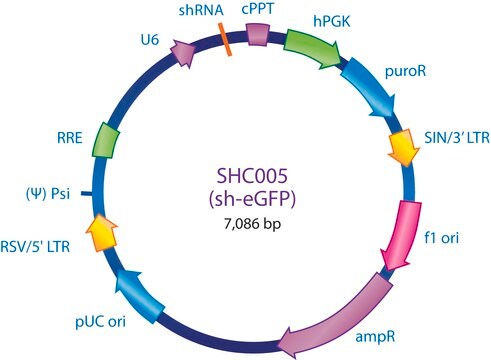EHU123221
MISSION® esiRNA
targeting human TP53
About This Item
Polecane produkty
opis
Powered by Eupheria Biotech
Poziom jakości
linia produktu
MISSION®
Formularz
lyophilized powder
sekwencja docelowa esiRNA cDNA
CATGAGCGCTGCTCAGATAGCGATGGTCTGGCCCCTCCTCAGCATCTTATCCGAGTGGAAGGAAATTTGCGTGTGGAGTATTTGGATGACAGAAACACTTTTCGACATAGTGTGGTGGTGCCCTATGAGCCGCCTGAGGTTGGCTCTGACTGTACCACCATCCACTACAACTACATGTGTAACAGTTCCTGCATGGGCGGCATGAACCGGAGGCCCATCCTCACCATCATCACACTGGAAGACTCCAGTGGTAATCTACTGGGACGGAACAGCTTTGAGGTGCGTGTTTGTGCCTGTCCTGGGAGAGACCGGCGCACAGAGGAAGAGAATCTCCGCAAGAAAGGGGAGCCTCACCACGAGCTGCCCCCAGGGAGCACTAAGCGAGCACTGCCCAACAACACCAGCTCCTCT
Ensembl | numer dostępu dla gatunku człowiek
numer dostępu NCBI
Warunki transportu
ambient
temp. przechowywania
−20°C
informacje o genach
human ... TP53(7157) , TP53(7157)
Opis ogólny
Aby uzyskać dodatkowe informacje, a także zapoznać się ze wszystkimi dostępnymi opcjami esiRNA, odwiedź SigmaAldrich.com/esiRNA.
Informacje prawne
Kod klasy składowania
10 - Combustible liquids
Temperatura zapłonu (°F)
Not applicable
Temperatura zapłonu (°C)
Not applicable
Wybierz jedną z najnowszych wersji:
Masz już ten produkt?
Dokumenty związane z niedawno zakupionymi produktami zostały zamieszczone w Bibliotece dokumentów.
Global Trade Item Number
| SKU | GTIN |
|---|---|
| EHU123221-20UG | 4061831359329 |
| EHU123221-50UG | 4061831375091 |
Nasz zespół naukowców ma doświadczenie we wszystkich obszarach badań, w tym w naukach przyrodniczych, materiałoznawstwie, syntezie chemicznej, chromatografii, analityce i wielu innych dziedzinach.
Skontaktuj się z zespołem ds. pomocy technicznej






